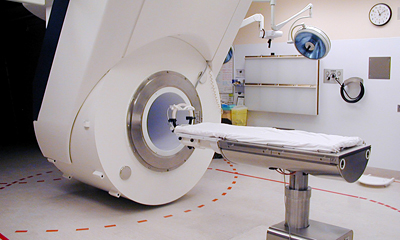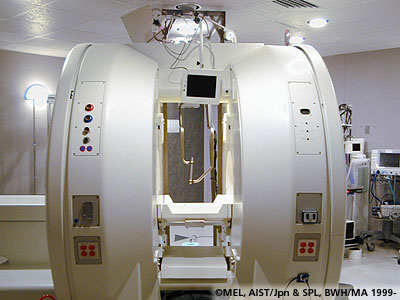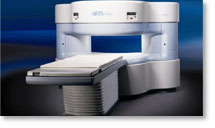




MRI-Current Status
There are three main types of MRI used in the operating room which are defined by the type of magnet used for generating the static magnetic field. These are superconducting magnets, electromagnets, and permanent magnets. A small electromagnet is shown on the right. These have the ability to be turned off and on when needed, unlike either of the other two magnet types. Also desirable is the small magnet size. The disadvantage of this type of MRI is the poor image quality due to low field strength and low field homogeneity. |
 |
 |
|
Shown above is a superconducting magnet. The magnet is always on, so special MR compatible surgical tools must be used. The magnet is moved into place when needed. An alternative configuration for superconducting MRI is shown at the right. In this setup, the surgeon stands between two magnet coils. The magnet is always on so MR compatible tools must be used. The advantage of these systems is good image quality. The biggest drawback of superconducting systems is their cost. |
 |
 |
Shown at the left is the third alternative for intraoperative MRI, permanent magnet MRI. These systems are commonly referred to as "open MRI" systems. They have a lower field strength than superconducting magnets and a consequent lower image quality. These magnets are always on, so MR compatible tools must be used. Because the magnet is permanent, operating costs are much lower than superconducting systems, although initial cost is still high. |
Sources:
http://www.hitachimed.com
www.nrc-cnrc.gc.ca
www.clevelandclinic.org
http://www.aist.go.jp/MEL/soshiki/kiso/biomech/chin/MMM/mrt.jpg
Website created by: David Thayer, last edited: May 29, 2006